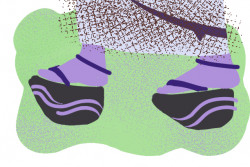
October 21, 2009
Pandora no Hako
Originally published on metropolis.co.jp on October 2009 Osamu Dazai was one of the postwar Japanese authors who set the stage for the country to emerge as a major force in contemporary fiction. This year, the centenary of his birth, sees three of his novels hitting the big screen. Shayo, Dazai’s take on the decline of […]
By Metropolis
Originally published on metropolis.co.jp on October 2009
![©2009「パンドラの匣」製作委員会]](http://files.metropolis.co.jp/movies/files/2009/10/813-E-pandora.jpg)
©2009 パンドラの匣」製作委員会
Osamu Dazai was one of the postwar Japanese authors who set the stage for the country to emerge as a major force in contemporary fiction. This year, the centenary of his birth, sees three of his novels hitting the big screen. Shayo, Dazai’s take on the decline of the aristocracy, was released earlier in the year, and Villon no Tsuma (Villon’s Wife) and Pandora no Hako both arrive in cinemas this month. Pandora brings to the fore Dazai’s emphasis on human weakness and suffering, as well as the need for people to reinvent themselves. The film starts as Hibari (Shota Sometani), a headstrong boy living in a rural area, begins to realize he is ill. At the exact point Japan surrenders WWII, Hibari starts coughing blood and is diagnosed with tuberculosis. Sent to a sanatorium, he feels increasingly isolated but is able to forge a difficult bond with Mabo (Riisa Naka), a young nurse who is in love with his friend. Next on the scene comes sultry nurse Take (Mieko Kawakami), and the two women simultaneously add to Hibari’s comfort and uneasiness. This period piece is well observed, though it may be a bit slow and ponderous for some. (94 min)







